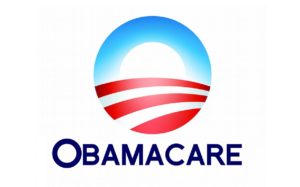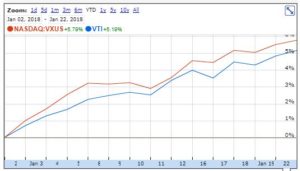Yesterday I started the story of how the Fox family had to shop for health insurance in the open market. Mostly, I talked about how we had always had employee-sponsored health insurance; we were shocked by how much Obamacare cost, but it turns out we were always paying that much, and we just didn’t know it (which is part of the problem).
Today we’ll talk about how health insurance has gotten so screwed up. Thursday we’ll finish up with how the Fox family is going to beat the system and save enough to completely fund our retirement (at about $5 million) along the way.
The definition of “insurance”
Part of the problem is the word “insurance” has been bastardized. Anywhere you go except for healthcare, the concept of insurance means you pay a small amount of money and if an unpredictable catastrophe occurs, those expenses are covered. Think auto insurance or homeowner’s insurance.
For a lot of political reasons, “insurance” has taken on a very different meaning when applied to healthcare. Health insurance isn’t meant to cover only unforeseen expenses and very large expenses. It has come to mean to many people “paying for all medical expenses”, including those that are optional (Viagra, psychological counseling, baby head helmets) and very predictable (birth control, contact lenses, dialysis).
Always remember that Las Vegas wasn’t built on winners and neither are insurance companies. Insurance companies have to make money or they go out of business. To cover all those expenses, they need to raise premiums or increase the patient’s share of the expenses through deductibles or out-of-pockets.
That’s coming out of your pocket. So when your insurance plan offers chiropractic visits or smoking cessation or a million other things that you’re pretty confident that you won’t ever use, you’re still paying for that.
The point is that “health insurance” has become more of a “healthcare buffet”. For a monthly cost you get (or at least can get) a bunch of stuff, some of which you’ll use and much of it you won’t. This has predictably lead to health insurance costs spiraling out of control (Obamacare costs rose about 10% in 2017). More on this in a minute.
What health insurance really provides
When you buy health insurance, what are you actually getting? This seems like an easy question, but it actually breaks down into three major components (two of which you probably know right away, but one that’s a bit more subtle):
- Payment of medical expenses: This seems obvious. When you have health insurance, you can go to the doctor and your health insurance pays some or all of those costs. This isn’t that big of a deal because for those predictable healthcare expenditures, you’re really paying these costs anyway through your premiums.
- Protection from major expenditures: In the more traditional sense of insurance, if you have some catastrophic medical event (in a major car accident, get diagnosed with cancer, etc.) your health insurance will cover the enormous expenses that would otherwise bankrupt most people.
- Negotiated rates: This is the subtle one. In addition to #1 and #2, when you have health insurance, you get access to the rates they negotiate with healthcare providers.
So when you “buy” health insurance, either one on your own like the Fox family is getting ready to do, or as part of your employee benefit package (and make no mistake, you’re paying for all of that), you are getting those three things.
Negotiated rates are a big deal
#3 is such a big deal that it deserves its own section.
When you go to a hospital, there is a list price that someone off the street without insurance would be charged. Then there is the negotiated rate that insurance companies work out with the hospital which is much, much lower.
Negotiated rates are a closely guarded secret, so it’s hard to figure out exactly how large the negotiated rate discount is, but if you know where to look, you can find it. It tends to be about 1.5 to 3x. For every $3 a person without insurance in charged for something, an insurance company will negotiate that rate down to $1. That’s a HUGE benefit!!!
This is one of those things that really pisses me off. When I am elected to Congress, I am going to work hard to remedy this.
The argument goes that insurance companies use their volume to negotiate better prices, but do they really? How many of those patients go to St Mary’s Hospital instead of Sinai Medical Center because of their insurance? My experience is that most insurers allow patients to go most places.
Second, when you use insurance it takes a long period of time for the insurance claim to be processed and paid, the deductible to be calculated and that invoice to be sent out and paid. Contrast that to a cash patient who could pay with a credit card that day (or a check to avoid credit card fees), and you could actually argue that cash patients should pay less than insurance patients, not three times more.
Also, where else would it be acceptable to charge a customer 3x compared to another. If you did that based on race (charge black people more than white) or gender (charge women more than men) or wealth (charge poor people more than rich people) or ethnicity (charge Asians more than Jews) people would throw a total fit, and it would totally be justified.
Scaling it down a notch, charging people 3x more because they are ready to pay you in US legal tender really isn’t all that different. People are throwing a fit about unaffordable healthcare in America, but I really don’t hear a lot about this. This is where you could make some real progress and give real relief to those who aren’t insured.
I’m not saying that hospitals and other healthcare providers should take less. I’m just saying they should charge everyone the same price, and it should be transparent.
Bottom line, in the country we live in today, probably the biggest benefit of health insurance is having access to those negotiated rates.
Everything is available at the buffet
Another major factor that has made health insurance more complicated and a lot more expensive is the breadth of coverage that is now fairly typical with most plans like Obamacare and employee-sponsored plans.
Obamacare has a special name these “extra” things—minimum essential coverage. They are things like: pregnancy, birth control, drug and alcohol abuse treatment, mental therapy to name a few. Those are required to be included in any Obamacare plan. Many employee-sponsored plans (like the one I had at Medtronic) had a lot more stuff too like: chiropractor visits, fitness counselors, etc. Plus, of course, Medtronic had amazingly good coverage for diabetes patients.
Look at that list. In our situation, we wouldn’t use any of those. We aren’t planning on having any more children and other steps have been taken to assure ongoing birth control isn’t needed ?. We don’t abuse drugs, don’t use chiropractors, don’t have diabetes, and don’t have high cholesterol.
However, when plans offer that coverage for things that are fairly predictable (not the classic definition of “insurance”) it has to be paid for somehow, and that somehow is with higher premiums. Whether we used it or not we pay those higher costs, and that’s one of the reasons health insurance is so expensive. It offers and charges you for so much that you won’t end up using. I guess that’s how we get to a crazy high cost like $2,300 per month as a premium.
For us (and a lot of people out there), we’re pretty healthy and really don’t take advantage of some of those gray areas of healthcare like chiropractors. We just want something simple that covers our doctor’s visits and catastrophic events.
As medicine gets more and more socialized (and you move away from the ability to choose a bare-bones plan—what we’ll be doing), you open yourself up to an ugly word in healthcare—Lobbyists. There are a lot of companies making incredible technology that helps people (I speak first hand on this, having worked for Medtronic for almost 20 years). It’s understandable that they are going to do everything they can, legally and otherwise, to get their products covered on insurance formularies. They aren’t bad people per se; they are just advocating for the products they believe in (and the products which also pay their bills).
Of course, nationalized medicine offers the biggest opportunity for this. Whether it’s Pfizer trying to explain how Viagra must absolutely be offered as a part of health insurance, or Medtronic and continuous glucose monitoring, or Bayer and birth control, or the American Association of Chiropractors, or the American Institute of Homeopathy. On and on and on.
There’s so much that could be offered as a part of insurance, the vast majority of which a very, very small portion of the population actually uses. Simply put, we can’t afford it all. In that case, it becomes a game of lobbyists who can best convince bureaucrats to support what they want. That’s not a good situation.
That leads to out-of-control costs, which we’re already seeing today–$2,300 per month. But if you have choices in the market, you can pick the plans that only give you what you want, and you can save a ton of money (about $5 million over your lifetime). That’s what we’ll talk about tomorrow.











